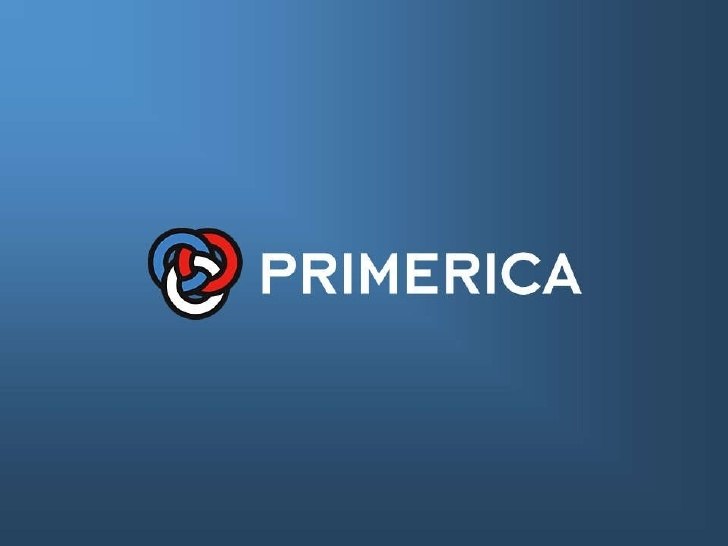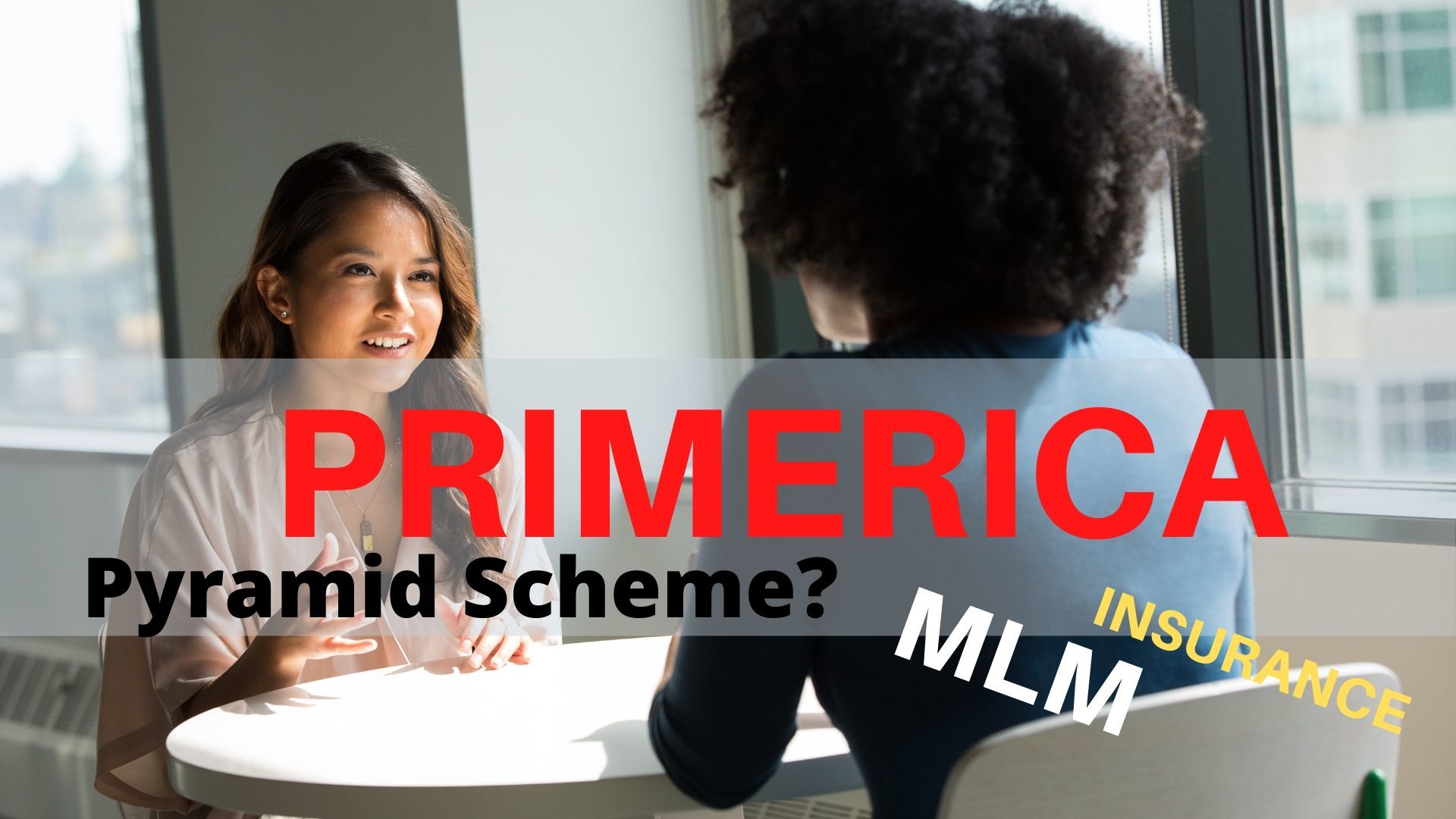Nowadays, most people are wary when they hear the term “Multi-level marketing” and many automatically equate this type of business model as a scam. A pyramid scheme built to make the ones at the top wealthy while baiting newer recruits with empty promises.
Is Primerica a Pyramid Scheme?
People working for MLM companies are hard-pressed to find individuals who are still interested in the business opportunities their brand offers. It’s the same story every now and again:
By offering you a chance to “start your own business,” MLM companies have built an industry of “business owners” who recruit more than they actually sell. Suffice to say, most people try to avoid friends who have found themselves in this networking business. Another type of salesperson that many people also try to avoid are insurance agents. I’m sure one of these two have come knocking on your door, or sent a “Hey, how are you?” message on your inbox, only to try to sell you on their service.
Want to know something amazing though?
A company has actually found a way to combine these 2 together.
Primerica is a multi-level marketing company that sells - wait for it - insurance and other financial services.
Yes. Primerica Associates have to pitch both Insurance and their new business opportunity to potential clients.
You might automatically assume that this must be some sort of scam.
However, the company has been in business for the last 40 years.
So, is it a legit business or a shady pyramid scheme?
What is Primerica?

- Company Name: Primerica
- Founder: Arthur L. Williams Jr.
- Founded: 1977
- Website URL: www.primerica.com
- Type: MLM Company (Insurance & Financial Services
Primarily, Primerica is a multi-level marketing company. Just like any other MLM, Primerica relies on their members recruiting new associates to market their services. And just like any other MLM, you earn more money through recruiting more people on your downline than the actual selling of the company’s services.
Many MLMs are pyramid schemes masked as legitimate businesses - I said many, not all. While there are still a few fair opportunities out there, most MLMs have a high failure rate, which means that most people who join lose more money than they actually make.
To give you an example:
In the year 2017, Primerica Representatives earned an average of approximately $6,000 per year.
That is not a typo.
To be exact, the actual figure is $6,030 PER YEAR. Not per month. PER YEAR.
That is roughly $500 per month - less than what you would earn if you were working a minimum wage job and a lot less than if you were working with another insurance company.
But I digress. I’ll talk about the “opportunities” and earning potential that Primerica offers later on. For now, let’s focus on Primerica as a company.
Primerica is an MLM company that sells insurance and financial services. Their main product is actually their Term Life Insurance. However, they also offer long-term care insurance, home insurance, and car insurance. The company has partnered with LegalShield to provide prepaid legal protection services, and with Equifax to form their DebtWatchers Program which provides debt management plans.
In addition, the company provides investment opportunities where they broker your investments in Mutual funds, Amenities, Segregated Funds, Managed Accounts, and other opportunities.
Just like Amway and Forever Green, people who join Primerica basically have to (a) sell their products to earn a commission or (b) recruit new people to join their downline and earn a commission from those sales.
In this case, the products are just the services mentioned earlier.
How Is Primerica Different From Regular Insurance Companies?
Insurance brokers from known insurance companies like John Hancock, AXA, and UXAA, typically earn through direct commissions from their insurance sales. Basically, they earn commissions on premiums paid by their clients. A small salary is usually provided but the main source of income for insurance brokers is definitely the commission they earn from actually selling their insurance plans.
How is that different from Primerica?
Well, Primerica Representatives earn a commission from insurance premiums and other financial services their clients pay for. However, Primerica provides another way to earn more: recruitment (It is an MLM after all).
The company employs an eleven-tiered pyramid where representatives get promoted based on the number of new recruits and sales they achieve. The higher your rank, the higher your rate for commission and overrides. However, rising up in ranks isn’t as easy as you might think. We’ll get to that in a bit.
So, the difference between a typical insurance company and Primerica is that one pays you a small salary and commissions while the other pays you a tiered commission rate based on your rank and commission on other insurance sales on your downline.
Doesn’t that make it sound like Primerica is actually a better “business opportunity?”
Let’s look at how the company actually started to give you a better picture before lacing a final judgment.
History
The company initially started under the name A.L. Williams & Associates back in 1977. It was named after the founder, Arthur L. Williams. From the get-go, the company began with the slogan: “Buy Term and Invest the Difference”
At the time, permanent or whole life insurance was a more popular option. However, after Arthur first handedly experienced how whole life insurance actually left their family underinsured when his father died of a sudden heart attack, he realized that many people overlooked the benefits of term life insurance.
Arthur didn’t invent the concept of term life insurance; instead, he started working as an agent under insurance companies at that time and marketed term life insurance on the premise that this type of insurance was a much cheaper option than whole-life insurance.
What is the difference between Term Life Insurance and Whole-Life Insurance?
The main difference between these two insurance options is that term life insurance coverage only lasts as long as the coverage states. You can typically choose between policies that cover 10, 20, or 30 years.
For the entire duration of the policy, you’ll be paying your premiums and you are insured during this time. However, when the term ends, you have to reapply for another policy and pay another set of premiums. On the other hand, whole life insurance plans cover a lifetime. Hence the name: Whole-life.
Another difference is the cost. Term Life insurance policies are cheaper because the coverage ends after a set number of years. If you don’t die during that period, you basically lose all your money. While whole life insurance options are more expensive, you do get full coverage until you die or until a maturity age - many insurance companies pay you your covered amount when you reach a certain age, usually between 80 to 100.
To give you a better idea on just how much the cost difference is, a healthy 30-year old man who wants to be insured for $250,000 will have to pay monthly fees of around $16 for a term life policy or $212 for a whole life policy. That’s a 13 times difference.
Why the huge cost difference?
Whole life policies place a certain amount from your premiums into a cash value which is placed in investments. This helps insurance companies grow your money so it can equal the death benefit amount of your policy.
Arthur’s take on this was that the huge price difference between whole life insurance and term life insurance could be used to make more money by “investing the difference” in mutual funds and annuities.
His business plan worked. A.L. Williams & Associates grew steadily over the years. Merging with and acquiring other companies over the years. The most notable merger was with the Massachusetts Indemnity and Life Insurance Company (MILCO) in 1980. By doing so, they became a subsidiary under PennCorp Financial. Eventually PennCorp became a subsidiary of the American Company in 1983.
Later on, the entire corporation was renamed Primerica - also known as Prime America. The name change was official in 1987, just 10 years after the company was founded. The company was eventually acquired by Commercial by Commercial Credit in 1988. Apparently they liked the name so they didn’t change it.
In 1998, Primerica acquired Travelers Insurance, becoming the Travelers Group. They merged with Citicorp and became Citigroup. Primerica was offered as an initial public offering (IPO) in 2010, and is currently part of the New York Stock Exchange (NYSE) under the name Primerica Financial Services. In 2019, Primerica Financial Services was awarded a Mutual Fund Service Award from the Dalbar Awards. The company has consistently been awarded the Mutual Fund Service Award since 2003.
How Does Primerica Work?
Picture this: an old friend, probably someone you haven’t heard from since highschool, sends you a message about a great new business opportunity. He boasts about this “unique opportunity to start your own business” so it catches your ear. You want to learn more. You want to understand how it works. So you meet him and well, let’s skip to the part where you've signed up and become a Primerica Associate.
They let you watch a few videos, give you a bunch of books for training. They “teach you how money works, get you protected. And get you on the track to financial independence.”
But wait. When you sign up with Primerica, you have to pay $99 to get started. That amount goes to a simple registration, screening, and licensing fee. After paying the $99 (think of it as your business capital), you are a fully fledged Primerica Associate.
However, you need to become a representative before you are able to start selling their insurance products. To do that, you have to pass a licensing exam for insurance agents. Don’t be fooled by the licensing fee you just paid. Primerica does not have the right to license anyone to start selling insurance. You have to take a licensing exam held by the National Insurance Producer Registry (NIPR); they have all the requirements on their website. Depending on which state you reside, you might also have to pay another fee to take the exam.
Signing up with Primerica does not guarantee that you will pass the licensing exam. In 2014, Primerica had around 190,000 new recruits but less than 4,000 were able to become fully licensed representatives.
Passing the exam is one thing but aside from $99 start-up cost, there is a monthly payment of $25 to cover training materials and other tools. Even when you haven’t passed the licensing exam and can’t really sell their products, you’ll be paying them that monthly fee.
Primerica is probably starting to sound sketchy. But, it isn’t that bad for some people.
If you’re already a licensed insurance broker, then you can go ahead and start selling insurance when you sign up. If not, then this will surely motivate you to study harder and pass that exam.
But here’s another twist: Primerica requires new recruits to provide a list of leads to their recruiter. When you join, you will be giving your recruiter 15 names of people you are close to so that you can learn from them as they make a sale. Think of it as an apprenticeship.
The company sees it as an effective way to teach new representatives how to make insurance sales. As well as upsell customers to purchase other financial services.
How do you make money?
There are 2 primary methods of earning money through Primerica:
The first is through direct commissions on any insurance policies you are able to sell. The actual rate of your commission depends on your rank. New Representatives typically earn 25% of the first premium paid on a policy; this goes up to 35%, 50%, 60% - all the way up to 95% if you reach the Regional Vice President rank. You raise your ranking by recruiting more people, effectively growing your downline, and reaching set amounts of paid premiums.
Here’s something else you should know: If your customer defaults on payments, you don’t get your commission. They refer to this as a chargeback.
Other services that you can earn commissions from are when people invest in mutual funds, annuities, or avail some of the other financial services that Primerica offers. Unfortunately, I don’t have the exact commission rates but most representatives earn somewhere around 10-25%.
The second way to make money is through building your downline.
If you don’t know what a downline is, you might want to read more about the structure of an MLM or Pyramid Scheme.
As you recruit more people, you earn an override. Overrides refer to a 10% commission from any sale that one of your recruits, or the recruits of your recruits (up to the eleventh tier) make. This is the larger money making opportunity that they want you to fixate on.
Theoretically, you can definitely earn a lot of money if all of your recruits are able to recruit more and more people, as well as make successful sales on insurance policies. However, this is not often the case. As we look into the actual products and services of Primerica, you’ll understand why.

Products
The primary service that Primerica offers is their Term Life Insurance Policy. Other financial services cover a wide range, from mutual funds, segregated funds, credit monitoring, debt management plans, and many more.
However, let’s focus on their Term Life Insurance Policy.
The good side of their policy is that the company has had a fairly good track record of quick payouts. Well, except for a couple of lawsuits that started in 2012 and ended in 2014 when they decided to settle by paying off $15.4 million to settle 238 cases. Aside from that, other reviews have claimed that Primerica has paid off most insurance claims.
Comparing the actual cost of their insurance policies, Primerica is priced higher than other insurance companies. This is probably why their Representatives put the pressure on you to sign on so you won’t get the chance to compare prices.
Why do you think Primerica representatives get high commission rates?
If you do get a chance to compare how much you’d pay for the same insurance coverage from other companies, you will probably find that you can definitely get better deals elsewhere.
But the insurance policies and other services of Primerica are legit. They are just pricier than the other options in the market.
When it comes to their services, it’s best to look at what their customers have to say:
Complaints/User Reviews
“When I first signed up with Primerica, they told me my policy was for 30 years. A 30-year term life insurance policy is also the contract I signed. However, 20 years later, they are telling me that my term life insurance policy has ended.”
Well, their customer support isn’t the best. While these are mostly because of errors made by the Representatives themselves, this kind of thing is a common complaint you’ll often find in the insurance biz. But, Primerica could have definitely handled that better.
“Faithfully paid my premium for over 30 years. Then they have the gall to raise my rates 400 percent. Not good business practice.“
Here’s the thing about term life insurance: you have to reapply when your contract ends. Usually, that means you are older by the time you need a new life insurance policy. Unfortunately, the older you are, the higher the cost of insurance. So, a $250,000 death benefit for a young 20 year old will not have the same premiums for someone in their 50s.
“I applied for term life insurance. For some reason, I was declined.”
Another thing about Primerica is that they are known to have a difficult screening process. If you have any pre-existing condition or belong to their high-risk bracket, there are high chances that your application will be declined or you’ll be stuck with absurdly high premiums to pay.
“I compared pricing online and Primerica was charging my wife and I 63% more than equally rated insurers. Won't deal with them ever again.”
I think I’ve mentioned this before: Primerica is a more expensive option. Here’s some customer proof of their overcharged insurance premiums.
Well, those were a bunch of reviews from people who have bought life insurance policies from the company. Here are some reviews from Representatives who have worked for them:
“Primerica was a great company to get my foot in the door with Insurance and financial services. They assist getting you licensed and educated.. “
Their training methods, tools, and many books can be helpful if you have no idea how to sell insurance. For some, starting with Primerica is actually a good first step to becoming legitimate insurance brokers. Their company does help with licensing (although you still have to take the test) and you also become part of a tight community of Primerica Representatives.
“You can make good money there. They do sell insurance and securities to people in need.”
Primerica Insurance Policies are legit and people get what they are paying for. Unlike other MLMs, Primerica is definitely not a scam. Although the cost of their policies and services may be more expensive, they are still a legitimate insurance and financial service company.
“The brand has terrible reviews all across web and throughout the industry. Corporate structure on the surface is a pyramid, multi level marketing..”
When you try to sell someone insurance and they decide to look up your company, Primerica appears next to terms like pyramid scheme, MLM, scam, and a bunch of other words that will probably push your potential client away. This makes it harder to sell insurance policies and recruit new people.
“Too multi-level-ish (lots of recruiting required to make bigger money)”
Like a typical MLM, the money is in the recruiting process and not the actual sales of services.
Pros
- Legitimate Insurance Policies and Financial Services with Real Payouts for Policyholders
- Decent Commission rates Per Policy
- Training Materials, Tools, and Sessions to Teach People About Finances
Cons
- Relies on Recruitments to Earn Money
- Start-up Fee ($99) and Monthly Fees ($25)
- More Expensive Insurance Policies and Financial Services
Is Primerica a Pyramid Scheme?
A pyramid scheme is a type of business model that relies on recruiting new members through promising high returns for enrolling others into the scheme, rather than providing an actual investment or selling opportunity.
Primerica does rely on recruiting new members and a large part of their pitch is the promise of financial freedom. A common red flag for most Pyramid Schemes is when companies put too much emphasis on the “opportunity to start your own business.” In truth, my ears tingle whenever I hear those words.
However, despite the sketchy sales tactics of some Primerica Representatives and their claims to providing better opportunities, Primerica is not an outright pyramid scheme. It does apply a multi-level marketing business model, which many pyramid schemes also use, but there is an actual difference between MLM and Pyramid Schemes.
Conclusion: Worth Joining?
While Primerica does rely largely on the recruitment of new representatives, people can actually make money by selling their insurance policies. The company offers legitimate products that don’t scam people into joining. However, when you look at the actual earning potential, your income relies primarily on how many people you recruit. If you are only able to recruit a few people, you’ll only be able to earn a few thousand dollars a year.
Remember how the average Primerica Representative earns only $6,030 per year?
So, when you look at the earning potential of this “business opportunity,” you can’t expect much unless you are the type of person who excels at selling to people. But even so, I think you could use your charming powers to direct people to better Insurance Policies from more notable Insurance companies.
If you’re looking to become an Insurance Agent, joining another insurance company is a better option. But if you were just looking for a money-making opportunity, there is another opportunity that has a much higher earning potential.

